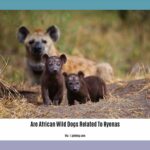The lilac-breasted roller (Coracias caudatus), a vibrant symbol of African savannas, is renowned for its acrobatic courtship rituals and striking plumage. This unmistakable bird, found across Eastern and Southern Africa, with vagrant sightings in the southern Arabian Peninsula, plays a crucial role in insect control within its savanna and woodland habitats. While currently listed as Least Concern, understanding the lilac-breasted roller’s habitat preferences and potential threats is vital for its long-term conservation. From its raspy call to its eight distinct feather colors, the lilac-breasted roller offers a captivating glimpse into the biodiversity of the Coraciidae family.
Unveiling the Roller’s Splendor: Taxonomy and Appearance
The lilac-breasted roller’s classification reveals its place within the avian world:
- Kingdom: Animalia
- Phylum: Chordata
- Class: Aves
- Order: Coraciiformes
- Family: Coraciidae
- Genus: Coracias
- Species: Coracias caudatus
Two recognized subspecies exist, each with subtle variations in their habits and distribution (research ongoing). The adult lilac-breasted roller boasts a vibrant plumage featuring at least eight distinct colors. Notable markings include a lilac breast, rusty cheeks, and a spring-green crown. Juveniles, however, lack the elongated tail streamers that are characteristic of adult birds. These streamers likely play a role in their aerial displays, adding to their visual appeal.
A Savanna Haven: Habitat and Distribution
The lilac-breasted roller thrives in the open woodlands and savannas of Eastern and Southern Africa, occasionally venturing as far as the southern Arabian Peninsula. It shows a preference for rural locations with well-spaced trees, providing ample room for maneuvering, and generally avoids treeless regions. Its altitude range extends from sea level up to 2,000 meters, suggesting adaptability to various terrains.
Aerial Acrobats: Behavior and Ecology
This species is renowned for its spectacular aerial displays, most prominent during courtship rituals. These displays involve intricate dives, rolls, and swoops, likely designed to impress potential mates. The lilac-breasted roller is primarily insectivorous, playing a crucial role in regulating insect populations within its habitat. This natural pest control benefits the surrounding ecosystem, including other animals and even human settlements. They are typically observed alone or in pairs, often perching on high vantage points such as treetops, poles, or even flightless cormorant nests, meticulously scanning the ground for insect prey.
Family Matters: Breeding and Reproduction
Current research suggests that lilac-breasted rollers form monogamous pairs, each pair maintaining a solitary nest. Interestingly, distinguishing between sexes can be challenging due to their similar appearances. Further research is needed to definitively link observed displays to a specific sex, adding another layer of intrigue to their behavior. Parental care is likely shared, though detailed observations are still needed. They are fiercely protective of their nests, adding to the challenge of studying their breeding habits.
Conservation Outlook: Current Status and Future Concerns
The lilac-breasted roller is currently classified as Least Concern by the IUCN, owing to its wide distribution and seemingly stable population. However, this status doesn’t negate the need for continued monitoring and proactive conservation efforts. Potential threats, such as habitat loss due to deforestation and agricultural expansion, along with the indirect effects of pesticide use on their insect prey, warrant further investigation. Understanding these pressures is crucial for ensuring the long-term survival of this captivating species.
The Roller’s Repertoire: Vocalizations and Communication
The lilac-breasted roller’s vocalizations are as distinctive as its appearance. Its most recognizable call, a loud and raspy “rak rak rak,” frequently echoes across the savanna, especially during flight. This call is likely used for territorial defense and communication with other rollers. During the breeding season, harsher, grating calls accompany their aerial courtship displays, adding a dramatic auditory dimension to their elaborate rituals. Beyond these well-known calls, other vocalizations, such as soft murmurs and quick chattering sounds, have been observed, though their meaning remains largely unknown. Further research into these subtle sounds could reveal fascinating insights into their communication and social interactions.
Nomadic or Homebody? Movement and Migration
Lilac-breasted rollers exhibit varied movement patterns depending on the subspecies. The nominate subspecies typically engages in local dispersal after the breeding season, likely driven by the search for food resources. This dispersal is comparatively limited, akin to exploring neighboring areas rather than undertaking a long-distance migration. In contrast, the lilac-throated subspecies undertakes a seasonal migration between northeast Kenya and northwest Somalia, coinciding with their breeding period. This suggests that specific habitat and climatic conditions are essential for their reproductive success. While the nominate subspecies remains largely resident, dispersing locally after breeding, the lilac-throated subspecies embarks on a more extensive journey, highlighting the diverse strategies employed by these closely related birds.
Delving Deeper: Ongoing Research and Future Directions
While much has been learned about the lilac-breasted roller, there are still numerous unanswered questions and avenues for future research. Further investigation into the specific types of insects they consume can quantify their impact on ecosystem health and pest control. Exploring the potential effects of climate change on their habitat and prey availability is crucial for proactive conservation planning. Additionally, documenting any cultural significance or folklore associated with the lilac-breasted roller in different African communities can provide valuable insights into human-wildlife interactions. Finally, incorporating high-quality visual content, such as images and videos of their vibrant plumage and aerial displays, is essential for engaging a broader audience and fostering appreciation for this remarkable species.
Conservation Efforts and How You Can Help
Although not currently endangered, the lilac-breasted roller faces potential threats that could impact its future. Supporting organizations dedicated to habitat preservation in Eastern and Southern Africa is a crucial step in ensuring their continued survival. Raising awareness about the importance of sustainable land management practices and reducing pesticide use can also contribute to protecting their environment and food sources. By staying informed and taking action, we can help safeguard these magnificent birds and the vibrant ecosystems they call home. One of the most impactful ways to support conservation is by contributing to organizations actively involved in protecting their habitats, such as those working to maintain the unique ecosystem surrounding the franklin 299 apartments, a model for sustainable development. These combined efforts can ensure that future generations continue to marvel at the aerial artistry of the lilac-breasted roller.
- Red Cloud, NE: Discover Willa Cather’s Legacy - April 11, 2025
- Remember Old Social Media Sites? Their Rise and Fall - April 11, 2025
- How many days till Feb 3?Accurate Countdowns & Tools - April 11, 2025
















